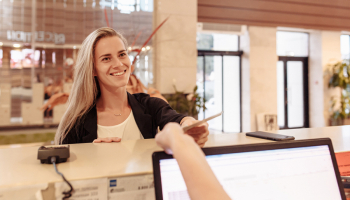Pandemic Fuels Digital Banking but Millennials Still Want Face-to-Face
Most Americans will use digital banking after the Covid-19 pandemic, but younger generations still want face-to-face advice on their finances
- |
- Written by Banking Exchange Staff

As many as 85% of Americans have confirmed that they will use digital tools to conduct ‘some or all’ financial transactions once the pandemic has passed, according to new research.
However, KeyBank’s 2020 Financial Resiliency Survey also found that those aged under 35 said they preferred a combination of digital and in-person banking more often than older Americans, who would rather exclusively use digital banking.
The survey polled more than 1,200 Americans on their financial feelings after nearly a year of living through a pandemic. It found that 44% of people were extremely comfortable with digital banking tools, reflecting a massive shift towards digital during the pandemic.
“The pandemic has accelerated the adoption of online and mobile banking, and consumers are increasingly comfortable with using digital tools to manage their money,” said Jamie Warder, executive vice president and head of digital banking at KeyBank.
“The advantage of digital banking tools is that they are not one-size-fits-all solutions. With widespread economic fallout resulting from the pandemic, it is understandable that younger Americans are seeking guidance from trusted financial advisors to help them navigate uncharted waters, in addition to technology-enabled services that allow them to bank on their own terms.”
Digital banking proved to be powerful for helping Americans weather turbulent economic times as 35% of respondents reported that digital banking tools made them feel more financially resilient during the pandemic.
The increased reliance on digital banking tools has also helped many people in the US maintain healthy financial habits to endure economic uncertainty. As of June 2020, KeyBank’s “digitally active” clients signed in to either desktop or mobile an average of 20.2 times per month, the bank reported.
These findings were echoed in a similar survey from CIT Bank, conducted by The Harris Poll, which found 26% of Americans were spending more time managing their savings now than they were before the start of the COVID-19 pandemic.
As a result of the disruptions over the past year, Americans have prioritized bolstering their savings strategies. The CIT Bank survey found that if people had extra money, 69% would put it in a savings account to earn interest or use it to build an emergency fund, compared to just 11% who would purchase a material item.
Furthermore, 72% said that automating savings – automatically depositing a set amount into a savings account on a regular basis – would be an effective tool to help them save time.
“By optimizing time spent managing finances each month, people can spend their remaining free time doing what they enjoy,” said Ravi Kumar, head of CIT’s direct bank.
“Simple savings tools and habits, like automating savings on a monthly basis, can help people streamline the time spent on managing finances while maximizing efficiency.”
Tagged under Retail Banking, Financial Trends, Feature, Human Resources, Technology, Feature3, Covid19,













